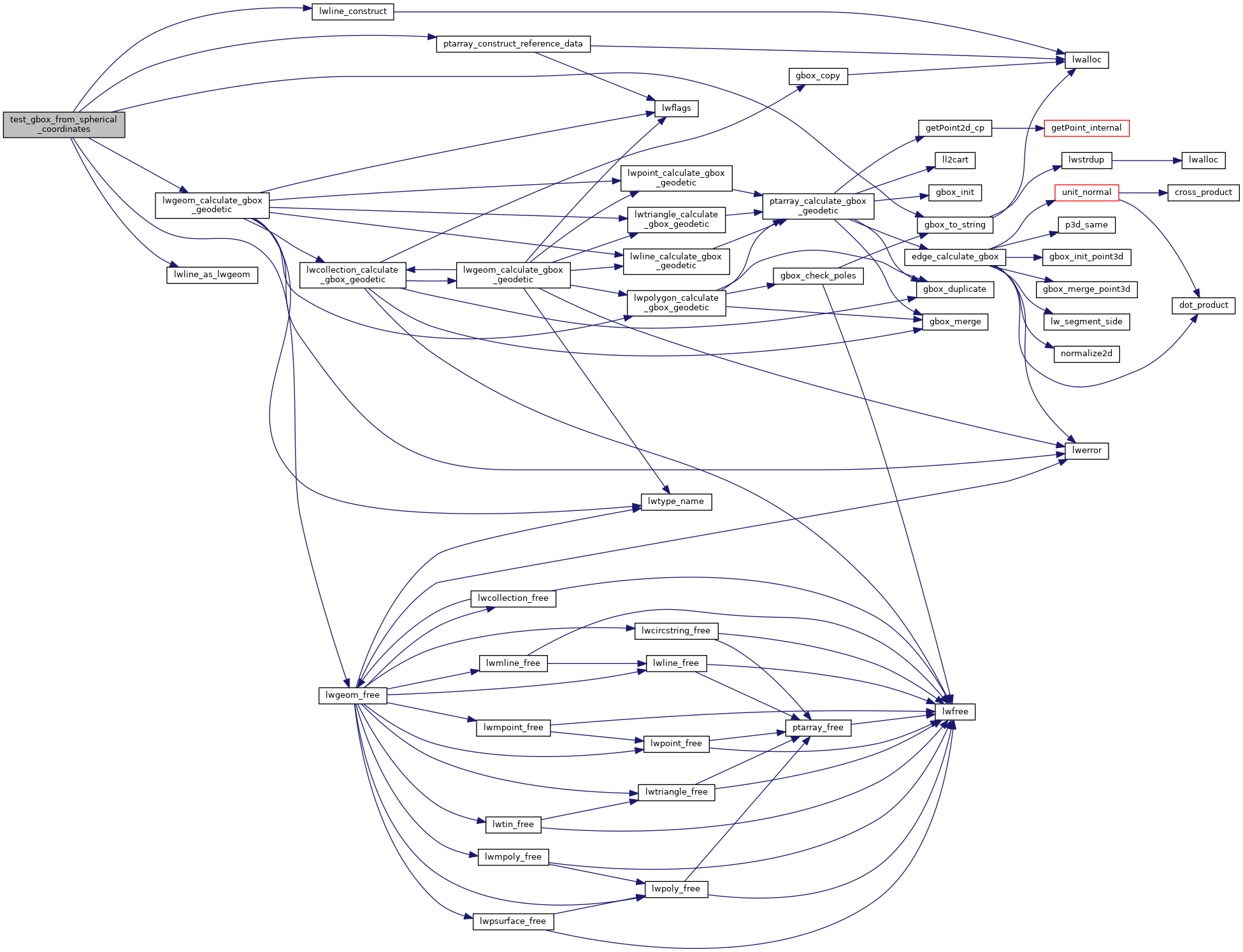◆ test_gbox_from_spherical_coordinates()
|
static |
Definition at line 224 of file cu_geodetic.c.
char * gbox_to_string(const GBOX *gbox)
Allocate a string representation of the GBOX, based on dimensionality of flags.
Definition: gbox.c:392
POINTARRAY * ptarray_construct_reference_data(char hasz, char hasm, uint32_t npoints, uint8_t *ptlist)
Construct a new POINTARRAY, referencing to the data from ptlist.
Definition: ptarray.c:291
int lwgeom_calculate_gbox_geodetic(const LWGEOM *geom, GBOX *gbox)
Calculate the geodetic bounding box for an LWGEOM.
Definition: lwgeodetic.c:3028
LWLINE * lwline_construct(int32_t srid, GBOX *bbox, POINTARRAY *points)
Definition: lwline.c:42
int gbox_geocentric_slow
For testing geodetic bounding box, we have a magic global variable.
Definition: lwgeodetic.c:36
Definition: liblwgeom.h:338
Definition: liblwgeom.h:443
Definition: liblwgeom.h:412
References LWGEOM::flags, FLAGS_SET_GEODETIC, gbox_geocentric_slow, gbox_to_string(), LW_FALSE, LW_TRUE, lwgeom_calculate_gbox_geodetic(), lwgeom_free(), lwline_as_lwgeom(), lwline_construct(), ptarray_construct_reference_data(), RANDOM_TEST, SRID_UNKNOWN, GBOX::xmax, GBOX::xmin, GBOX::ymax, GBOX::ymin, GBOX::zmax, and GBOX::zmin.
Referenced by geodetic_suite_setup().
Here is the call graph for this function:

Here is the caller graph for this function:
